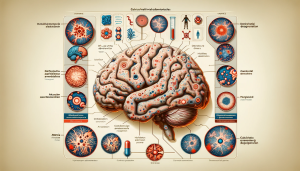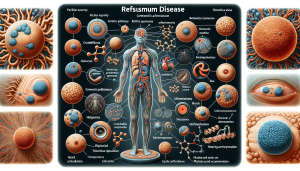 Abstract
Abstract
Vanishing White Matter Disease (VWM) is a rare, progressive leukodystrophy characterized by demyelination and neurodegeneration. This comprehensive review seeks to illuminate the molecular underpinnings, clinical manifestations, diagnostic methodologies, and potential therapeutic avenues in VWM.
Introduction
Vanishing White Matter Disease, also known as Childhood Ataxia with Central Nervous System Hypomyelination (CACH), represents a paradigm shift in our understanding of leukodystrophies. It is primarily a disease of childhood, with a profound impact on the central nervous system.
Molecular Pathogenesis
The disease is typically caused by mutations in any of the five genes encoding the eukaryotic translation initiation factor 2B (eIF2B). These mutations lead to defective stress responses in oligodendrocytes, the myelinating cells of the CNS, culminating in progressive myelin loss and brain white matter degeneration.
Clinical Presentation
VWM is characterized by episodes of rapid neurological deterioration following stressors such as fever or head trauma. Symptomatology includes ataxia, spasticity, seizures, and cognitive decline. The course of the disease is relentlessly progressive, though its pace can vary.
Diagnostic Approach
Diagnosis is based on clinical assessment, MRI findings (which show characteristic changes in the white matter), and genetic testing to identify eIF2B mutations. MRI findings in VWM are distinct, with diffuse white matter abnormalities and a characteristic cavitary degeneration.
Therapeutic Management
Currently, there is no cure for VWM. Management is primarily supportive, focusing on symptom relief and prevention of stress-induced exacerbations. Rehabilitation therapies play a crucial role in maintaining function and quality of life.
Prognosis and Future Directions
The prognosis of VWM varies, but the disease often leads to severe disability and premature death. Research is focused on understanding the precise molecular mechanisms and exploring gene therapy and other novel therapeutic strategies.
Conclusion
Vanishing White Matter Disease, while rare, offers critical insights into the complex interplay between genetic mutations, cellular stress responses, and neurodegeneration. A multidisciplinary approach, integrating clinical care and research, is vital for advancing our understanding and management of VWM.








